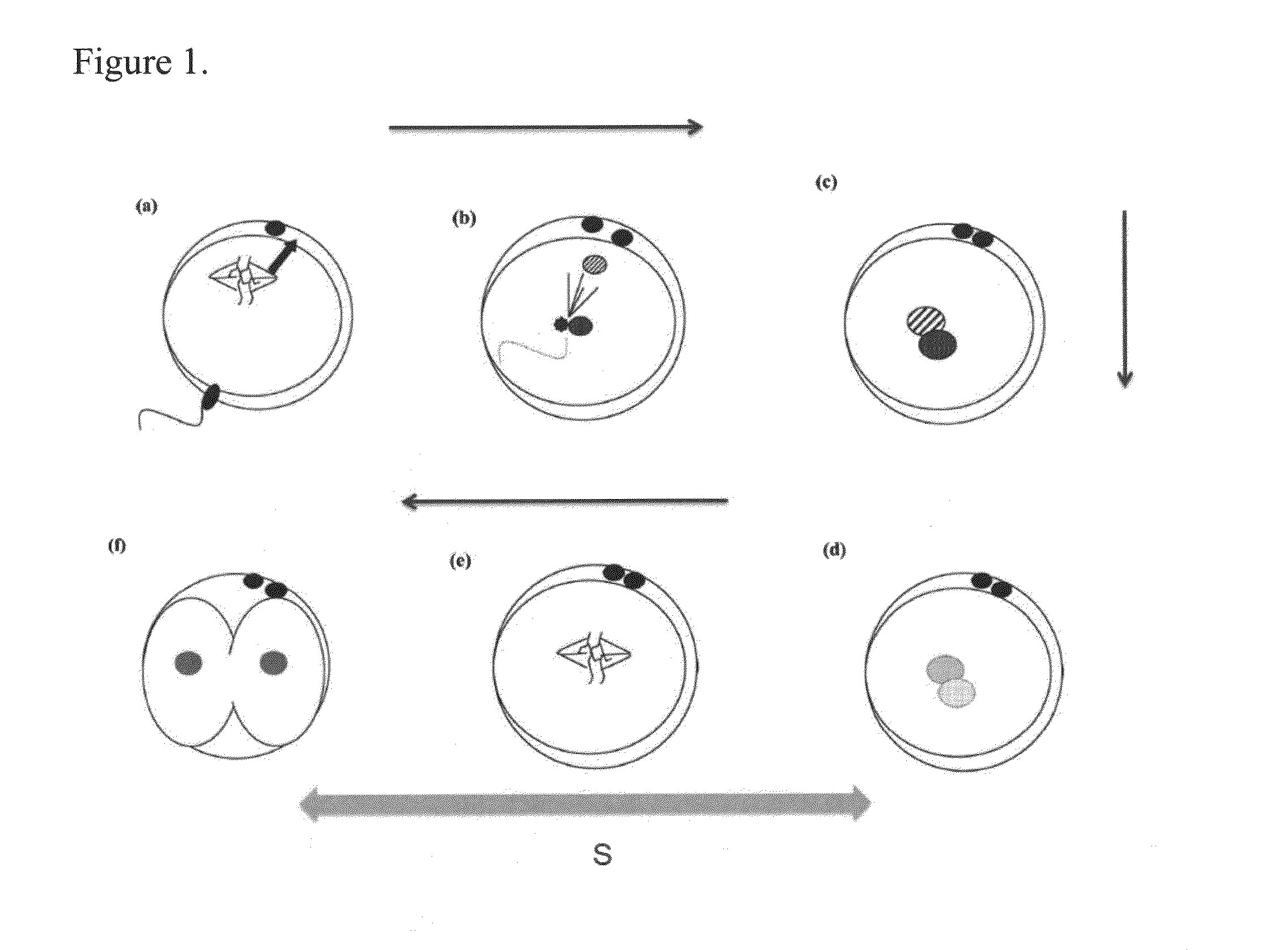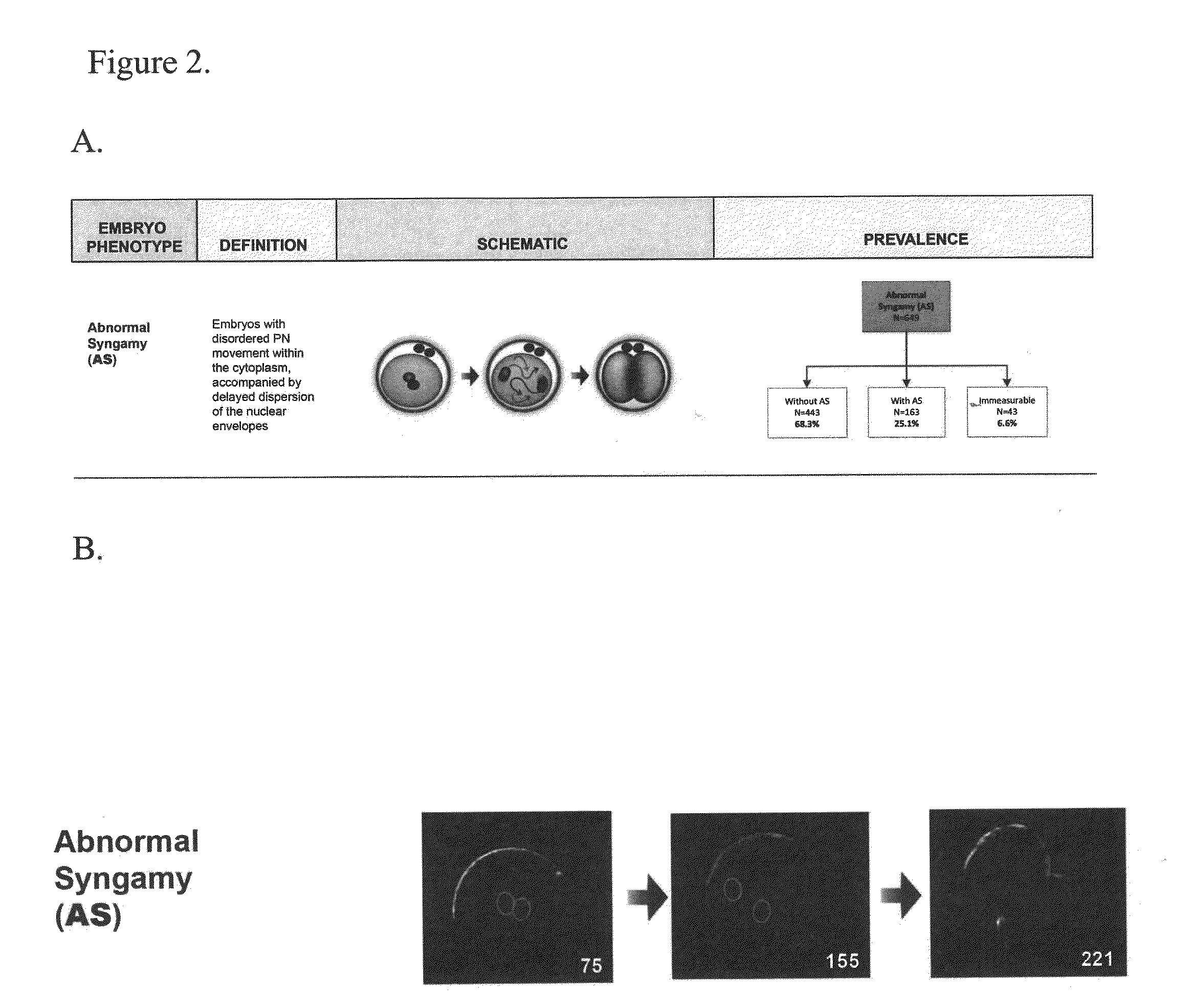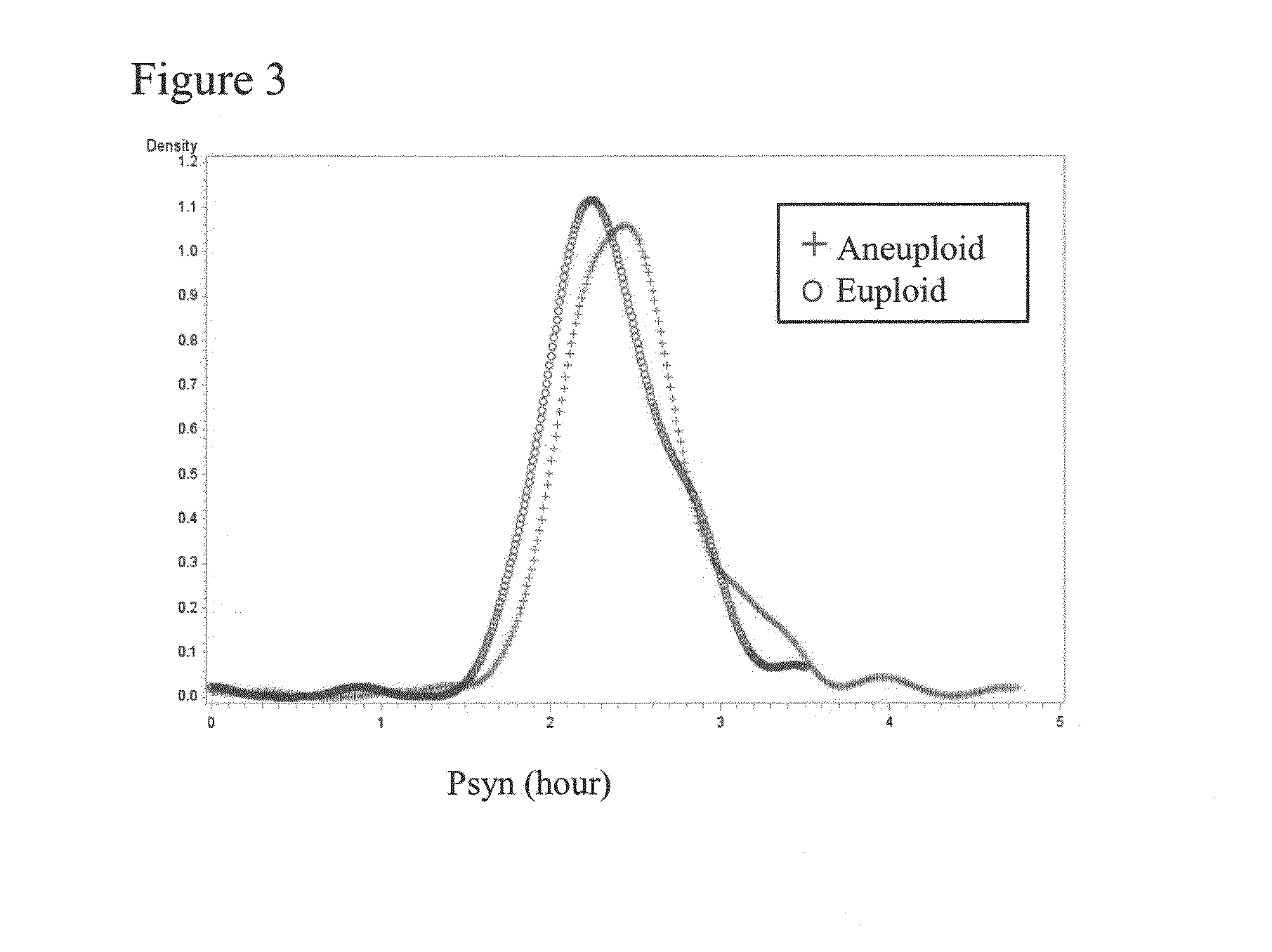Abnormal syngamy phenotypes observed with time lapse imaging for early identification of embryos with lower development potential
a time-lapse imaging and abnormal syngamy technology, applied in the field of biological and clinical testing, can solve the problems of low birth rate, miscarriage, low birth rate, well-documented adverse outcomes for both mother and fetus, etc., and achieve the effect of lowering the potential for implantation and low development potential
- Summary
- Abstract
- Description
- Claims
- Application Information
AI Technical Summary
Benefits of technology
Problems solved by technology
Method used
Image
Examples
example 1
[0107]A retrospective cohort study was done using image data collected from 651 embryos from 67 patients from five clinics in a 16 month period. Patient embryos were imaged using the Eeva™ Test, a time-lapse technology developed for blastocyst prediction.
[0108]All imaged embryos were identified as having 2 pronuclei (PN) before being placed in a multi-well Eeva dish that allows embryos to be tracked individually while sharing a single drop of culture media. A fertilization check was performed according to each clinic's standard protocol. All 2PN embryos were transferred to the Eeva dish immediately after fertilization status was assessed, and the dish was placed on the Eeva scope in the incubator. To maintain a continuous and uninterrupted imaging process from Day 1 through Day 3, no media changes or dish removal from the incubator were permitted. On Day 3, imaging was stopped just before routine embryo grading was performed. All embryos were tracked individually to maintain their i...
example 2
[0115]It has been reported that more than 50% of the human embryos cultured in IVF clinics are aneuploid embryos that have an abnormal number of chromosomes. These aneuploid embryos have lower implantation rates and are not likely to result in live birth of healthy babies. Currently, pre-implantation genetic screening (PGS) is the most effective approach to select against aneuploidy embryos. However, due to its high cost, labor intensive requirements and invasive nature, less than 10% of patients that are treated for assisted reproduction undergo PGS prior to embryo transfer.
[0116]In order to develop a non-invasive time-lapse enabled assay to assess the risk of embryos being aneuploid, it was discovered that by assessing the Psyn parameter, alone or in combination with other cellular parameter, embryo morphology and patient information, the likelihood of an embryo being aneuploid can be determined.
[0117]By evaluating Psyn values from time-lapse data of 402 embryos, it was discovered...
example 3
[0119]Further analysis of the retrospective cohort study described in the previous examples was performed to evaluate the AS parameters in combination with other atypical phenotype parameters. Using the data from the 67 patients and 639 embryo movies, embryos with one or more atypical phenotypes were analyzed.
[0120]The atypical phenotypes examined were abnormal cleavage (AC), abnormal syngamy (AS), abnormal first cytokinesis (A1cyt), and chaotic cleavage. The AS phenotype was defined as described in Example 1. The AC phenotype was defined as embryos exhibiting producing more than 2 cells during a single cell division event, including AC1 phenotypes that exhibited a first cleavage yielding more than two blastomeres and AC2 phenotypes that exhibited a daughter cell cleavage yielding more than two blastomeres. The A1cyt phenotype was defined as embryos exhibiting oolema ruffling with or without the formation of pseudo furrows before the completion of first cytokinesis. The chaotic clea...
PUM
| Property | Measurement | Unit |
|---|---|---|
| time | aaaaa | aaaaa |
| time | aaaaa | aaaaa |
| time | aaaaa | aaaaa |
Abstract
Description
Claims
Application Information
 Login to View More
Login to View More - R&D
- Intellectual Property
- Life Sciences
- Materials
- Tech Scout
- Unparalleled Data Quality
- Higher Quality Content
- 60% Fewer Hallucinations
Browse by: Latest US Patents, China's latest patents, Technical Efficacy Thesaurus, Application Domain, Technology Topic, Popular Technical Reports.
© 2025 PatSnap. All rights reserved.Legal|Privacy policy|Modern Slavery Act Transparency Statement|Sitemap|About US| Contact US: help@patsnap.com



